Harar is a numerologist’s wet dream. I probably shouldn’t say that about the fourth holiest city in Islam, but it’s not untrue.
The story more or less starts in the year 1216, when Sheikh Abadir Umar ar-Rida travelled to Harar from the Arabian peninsula. It was he who introduced Islam to the city, establishing its first mosque. Nowadays, it’s said that the number of mosques and shrines in the old town (or Jugol) totals 99, representing the 99 names of Allah known to man. Not that you’d be able to count them all, thanks to the labyrinth of laneways—there are over 350 in the 1km2 Jugol, accessed through only six gates. These laneways are colourful, too, thanks to the vibrant tones of people’s homes and the rainbow of clothes worn by pedestrians. The Sheikh’s family still live in Harar, and locals explained that the adjoining mosque was an important pilgrimage site for Muslims worldwide.
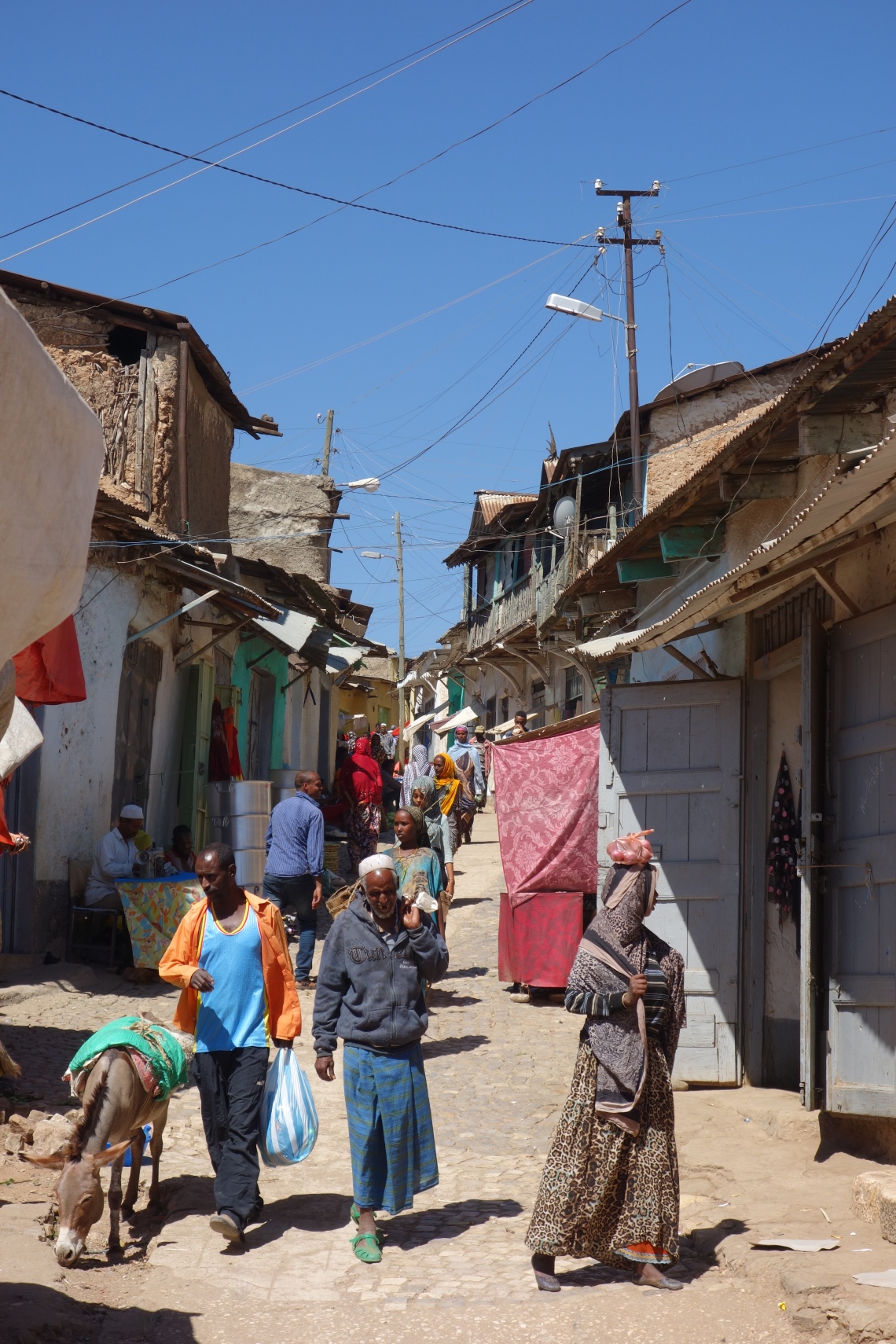
My first and most frequented entrance to Jugol was the Shewa/Shoa Gate, a bustling market which became almost impassable as the sun set. Here you’ll find everything from vegetables to clothes, but what makes this market particularly interesting is the presence of street food—a rarity in Ethiopia. Harar has historically been a melting pot of local ethnicities form Ethiopia and Somalia, Arab and Indian traders, and the odd European libertine poet-cum-arms dealer (more on that later).
Owing to this history, it’s only fitting that samosas are snack of choice for both street vendors and customers alike. Groups of women will fry hundreds earlier in the day, then head to market in the afternoon, each carrying an enormous basket- or bucketful. By the time I buy them, they’re already cold and a bit greasy, but they hadn’t even sold half yet! They’re one of the few things a faranji (or faranjo, as we’re known in Harar) can buy with just coins—“two… one,” was the rate quoted by the friendly woman selling to me. At first I thought she meant 21 birr, which lead to a strange flurry of me giving her money, her giving It back to me, me giving it again, her giving me samosas and change, me giving more money, her giving me more samosas, until I realised that she had meant “two for one birr.” A quick flick of the wrist and she’d deposited two parcels of pastry in my hand, with a scrap of newspaper to hold them with; rinse and repeat every time I gave her another coin. It did seem strange that everyone had been laughing at me… Anyhow, it was nice not being overcharged in the end when I was apparently too eager to get rid of my cash, and the samosas themselves weren’t half-bad considering how cold they were.
Another street food staple at the Shewa Gate market were biscuits, yes, biscuits. Home-made, and still a bit warm, the biscuits go for a similar rate but have almost no flavour and shatter into a fine dust with only the slightest of pressure. Needless to say, they were in small pieces before my hand reached anywhere near my mouth.

Once you’ve squeezed through the gate, you’re inside the maze. One minute you’re squeezing between bodies on a busy thoroughfare lined with men attending to chattering, vintage sewing machines all day long, and one or two turns later you’re squeezing between walls where the only soundtrack consists of children playing or goats bleating. All of this occurs with a backdrop of buildings constructed primarily between the 13th and 16th centuries, but some date as far back as the 10th century.
Harar is truly mystical, and I don’t mean that in the clichéd orientalist sense that’s so easy to fall into in this town, but in a more literal sense, where Jugol is somehow both quaint and lively at the same time. The fact that the laneways follow no overarching layout helps; in the four or five days I spent there, I got lost every single time I tried to find my unmarked guesthouse, and normally I have a good sense of direction! Try to take a shortcut and your path will be blocked by goats aggressively locking horns. Try to find your way back and you’ll interrupt a feral cat fight.
I found it was best to just follow the laughs of children, who are constantly playing chasings. Often they’ll even try to give you directions without knowing where you want to go, where they’re pointing to or how to speak English. It’s all very cute. When I was little, I always wanted to visit a hedge maze, but Harar is the maze to end all mazes.
The spectacle to which I owe my alliterative title began in the 1960s to protect cattle from hyena attacks. Since then, the practise of feeding Harar’s wild hyenas has become a tourist attraction, with the revered ‘Hyena Men’ allowing visitors to feed the animals themselves for a small fee.
Because the hyenas have become used to the family that’s been feeding them for decades, they faithfully show up just outside the old town at dusk every day and are as comfortable as well-fed pigeons. It’s also extremely cute to watch them come in packs, with the babies following alongside the adult hyenas. Nothing can prepare you for what they’re like up close.
I can happily report back that hyenas are a strange combination of brutishly heavy and extremely cute. They eat like puppies, and hearing them eat up close when you’re feeding them out of your mouth allows you to hear every single snort and slurp (for better or worse).
Outside of Harar is the town of Babile, home to one of the region’s largest camel markets and an important hub for camels coming to and from Somaliland. A local saying attributes the camels’ wily smirks to knowing the elusive 100th name of Allah, fitting for a town so obsessed with numbers. The market itself was nothing short of idyllic—as far as camel markets go, anyway. Perched atop steepish cliff overlooking a serene valley, the expansive camel market was really nice just to wander through.
Me and two of the other faranjos I met in Harar received a fair amount of attention more than we had elsewhere in the country. Everyone wanted to know where we were from, as if it were some sort of trick question. After reassuring them that I’m Australian and not from the US (with one of my American companions subtly posing as a Canadian) people seemed to warm to us. “Me: Oromo,” one of the men excitedly replied. He was just one of a very small handful who could speak a few words of English; most of the other men formed circles of onlookers around these interactions. It was a nice experience, and people seemed genuinely interested to meet someone from another culture and serve as ambassadors from their own. Personally, I’d never been introduced to someone by their ethnicity and this was a cool insight into how communities in places as diverse as Babile function. Harar proper is a melting pot of Harari, Oromo and Somali people, as well as people of Indian and Arab descent. At the same time, I can’t help but associate this interaction with the ongoing strife in Oromia, especially given that my bus on the way to Harar passed through what seemed to be a protest that had been ‘dispersed’ by soldiers.
After meeting these men at the camel market, were invited by others into one of the market’s tea stalls, made with fresh camel milk. Sitting shoulder-to-shoulder with men and women of all ages was another cool experience, and what minimal shade the hut provided was welcome respite from the heat. I’m not a tea person at all, but the sweetness of the fresh camel’s milk (combined with heaps of sugar, I imagine) made me really enjoy the drink.
The camels themselves actually quite pretty-looking, and knowing how valuable they were impressed the significance of the sheer number of them upon me. In this part of the world (and I say that because this doesn’t apply to the whole of Ethiopia but it does to contiguous areas which share certain cultural practises, i.e. Somalia), camels are an important investment. As such, they have come to signify wealth and are an important element in dowries. Just outside the market you can fine pretty much any other animal that might be useful: donkeys, goats and oxen, to name a few.


On the topic of brief excursions, I also visited Didimtu, supposedly home to the largest khat market in the region (or in the world?). The markets are at their busiest at dawn and dusk, so we decided to visit at dusk. Unfortunately, when we got there we couldn’t find the market at all and were being followed by an increasingly-large group of men up and down the main street while women ran around us with enormous bundles of khat. We decided this was weird, and tried to find the next minibus back to Harar. It turned out that every single one was waiting for their previous passengers to return from the markets. We had no idea how long anything was going to take and it was now dark, so we went van by van trying to find one which wasn’t waiting.
We had pretty much reached the end of the main street when one of the vans we had previously tried pulled up beside us. Apparently he had seen us walk up and down the main street without luck and felt bad for us, so he welcomed us into his van to give us a quick lift while he waited for his main passengers to return. When we arrived back in Harar, he refused any payment, much to our amazement. We were astonished and beyond thankful, and this sort of generosity began to reappear periodically throughout my trip.
But this does provide a good opportunity to outline the dynamics of the khat industry in Harar. Somalia is the main export market for khat, which can’t be cultivated on as wide a scale as Ethiopia because of its climate. Because of this hundreds if not thousands of small trucks literally race literally between Harar and cities in Somalia to be the first to deliver that day’s khat. They’re the craziest drivers in Ethiopia, and have rightfully earned the nickname “al-Qaida” among locals, owing to the Arabic Isuzu logo on the rear of each truck and the sheer number of animals they kill with their reckless road manner. An interesting choice of name, I thought, given the trucks’ close proximity to al-Shebaab.
In Harar itself, and all of the other towns in the region, the many streets are lined with khat addicts, who laze about all day chewing the leafy stimulant. You’ll even see many old men grinding the leaves into a paste with a pestle and mortar, having lost their teeth already thanks to excessive chewing. This situation means that in smaller towns, the only people you can observe doing work are women, while almost all of the men sit chewing. Of course though, I can’t speak for who does the work outside of these observations.
So what’s khat like? Not worth it, in my opinion. The flavour is gross, if bearable, but the effect is so minimal considering the amount of chewing required that the whole experience is both boring and tiring.
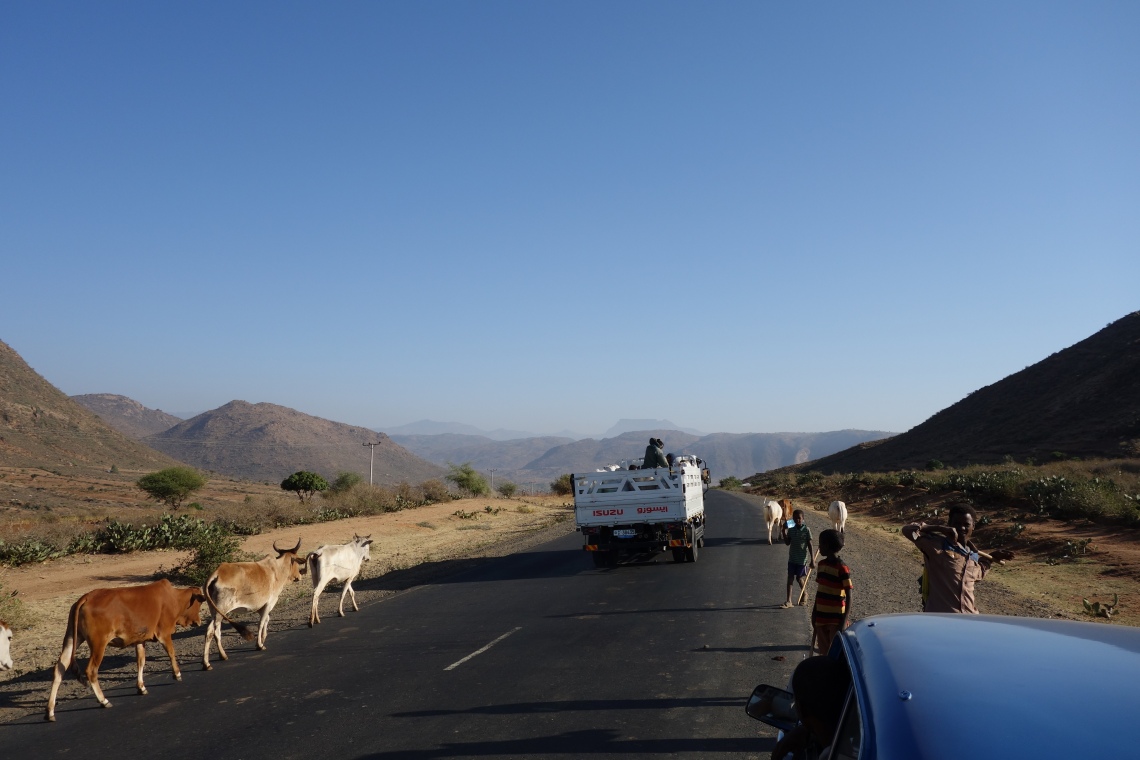
Harar is also where the gay French libertine poet Arthur Rimbaud started a new life as an arms dealer in the 1880s. Yes, you read that correctly. There’s a museum where he supposedly used to live, but I’ve read elsewhere that the grand house was built shortly after his death and was actually the home of an Arab merchant. The best part of the museum is not the section on Rimbaud himself, but the gallery of photos from the earliest western visitors to Harar, which show how little it has changed over the centuries. It’s quite amazing.
To go further back in time, there’s the Harar National Museum in a parallel laneway which houses books, coins and other objects dating back several centuries. There’s everything from beautifully-preserved scientific manuscripts from Islam’s golden age to jewellery in styles still worn today. But for me, the highlight was the cabinets filled with coins no bigger than a thumbtack which had been engraved with some of the most intricate Arabic calligraphy I’ve ever seen. The earliest ones date back from 800 AD, which makes them all the more impressive.
Outside of the old town, Harar is nice but nothing special. There are still some cool things to check out, such as the Harar Brewery (the staff are crazy, but in a friendly way), and the ubiquitous and beautifully-preserved Peugeot 404s are a welcome alternative to Addis Ababa’s sea of blue Ladas. But overall, Jugol is the place to be.
There are only three guesthouses within the walls of Jugol, so it’s a good idea to book a few days ahead so as not to miss out. While waking up to the 99 simultaneous calls to prayer wasn’t what I anticipated, the location and character of these guesthouses far outweigh any comforts promised by the regular hotels. (Side note: they do suffer from water shortages from time to time, which meant I had to go 4 days without a shower. That part sucked.)
One of the main centres of Jugol is the camel meat market, where flock upon flock of falcons are waiting to swoop at every last scrap. It’s one of the coolest bird shows you’ll ever see, and the scenery isn’t bad either.
Wander down any of the laneways radiating from here and you’ll come across countless hole-in-the-wall restaurants with nothing but the fish and chip shop door flaps to give them away. I don’t quite know how to convey my experiences at these places, because the food is so indescribably amazing. Do you like lamb shanks? How about a fucking goat shank? That’s right, by pointing at someone else’s empty plate for lack of any menu, I had ordered the most enormous yet most beautifully cooked piece of meat I’d ever had. And it was so delicious that I somehow managed to devour it. These meals come with rice and two or three side dishes/condiments that were delicious in themselves even though I couldn’t make out what they were. If you’re lucky, the restaurant will have a dripping barrel out the front full of water to wash off your sticky hands. Harari cuisine is unique in Ethiopia, and Harar really is a city made for meat lovers.


Hospitality is another aspect in which Harar excels. January 7 is Genna, or Ethiopian Christmas. It was just my luck that at this time I found myself in the old town of Harar, one of the few overwhelmingly non-Christian parts of Ethiopia. But as I walked from my guesthouse to another to regroup with some fellow travellers I had met, I was invited to join in on a Christmas feast in someone’s lounge room.
I was caught off-guard, and the language barrier didn’t help, but they were so friendly and eager for me to join that I was quickly chose to take them up on their offer. Before I knew it I was devouring tender chunks of slow cooked goat, potato and rice with my bare hands (but without injera, for once).
But the women who were excitedly cooking and serving up food in the courtyard throughout the meal wore hijabs, and some of the older men who were seated on the upper seats in the lounge room (spots which are typically reserved for older men and religious leaders) wore skullcaps and had red beards. I was celebrating Christmas with Muslims!
After thanking them profusely for their seemingly limitless hospitality, I asked what the celebration was for and if they were Muslims. They cheerfully confirmed my suspicions. Only one of the younger men spoke a bit of English, but he was able to explain that they were a group of neighbouring families who had come together to celebrate Genna, despite the fact they don’t observe it religiously. I asked why and they gave me a polite look which probably meant “Is this guy stupid?”
The man explained that as it’s an important holiday they see it as a time to come together and celebrate, but without the religious rituals. Seems similar to how most atheists/agnostics/non-Christians/whatever celebrate Christmas in Australia, or the West in general. This experience has remained on my mind for the months since I left Ethiopia. Why do we not observe Eid the same way that these people celebrated Christmas?
The man continued, introducing me to his children while the women came in periodically to make sure I was still eating. Its’ strange as an outsider to see this kind of gender segregation, but everyone was so happy to be doing whatever they were doing that it didn’t seem to be a big deal at all. When the shared platters finally cleared (after the women made sure we had seconds and thirds, in addition to however many portions were served before I had arrived), some of the kids became a bit restless and were snapped at by their grandfathers. It was time for me to continue about my day, but I will forever be thankful to these families not only for their immense hospitality but also for demonstrating why UNESCO awarded Harar the Cities for Peace Prize 2002-2003 for its interfaith understanding and harmony.

Later on in my trip, I met a Tunisian man who told me that there are numerous towns across northern Africa which claim to be the fourth holiest city in Islam (after Mecca, Medina and Jerusalem). UNESCO also counts 82 mosques and 102 shrines, as opposed to 99.
But to me, none of this matters. I wish my own city, Sydney, could learn from Harar. People love to argue that this culture or that is “incompatible” with their own, but Harar’s intercommunal understanding, cohesion and harmony are a testament how we as humans have lived side-by-side in the past, and will continue to do so in future.
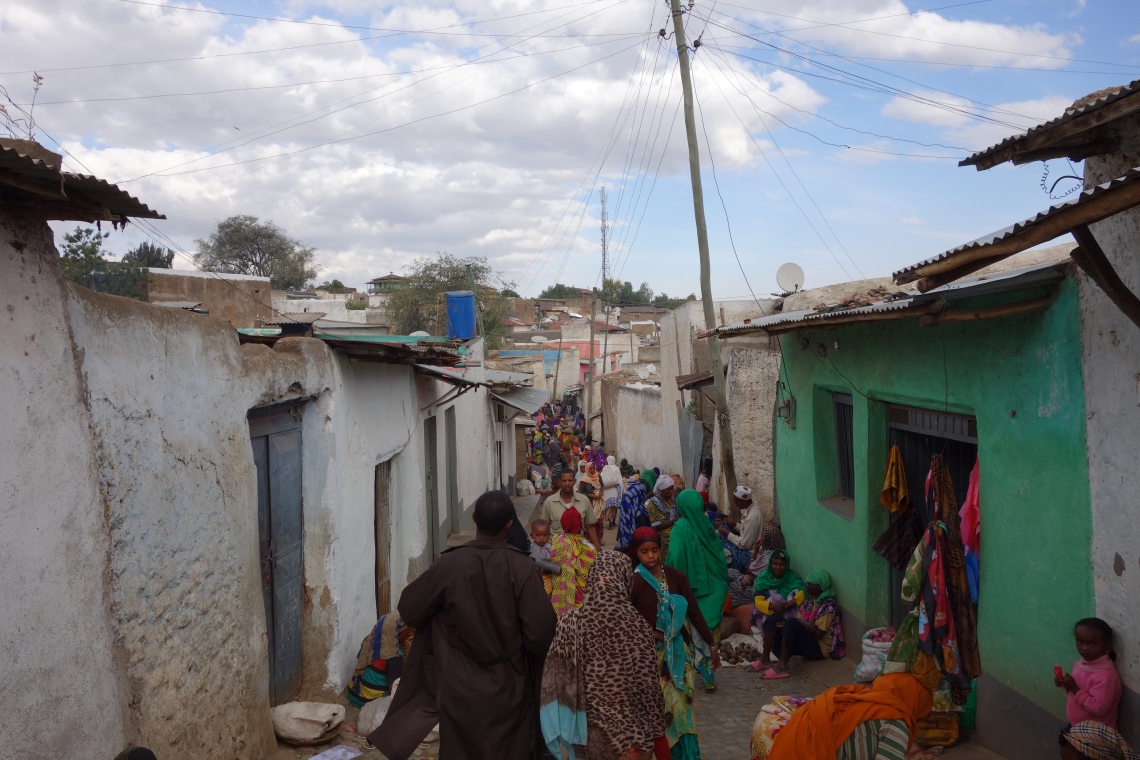








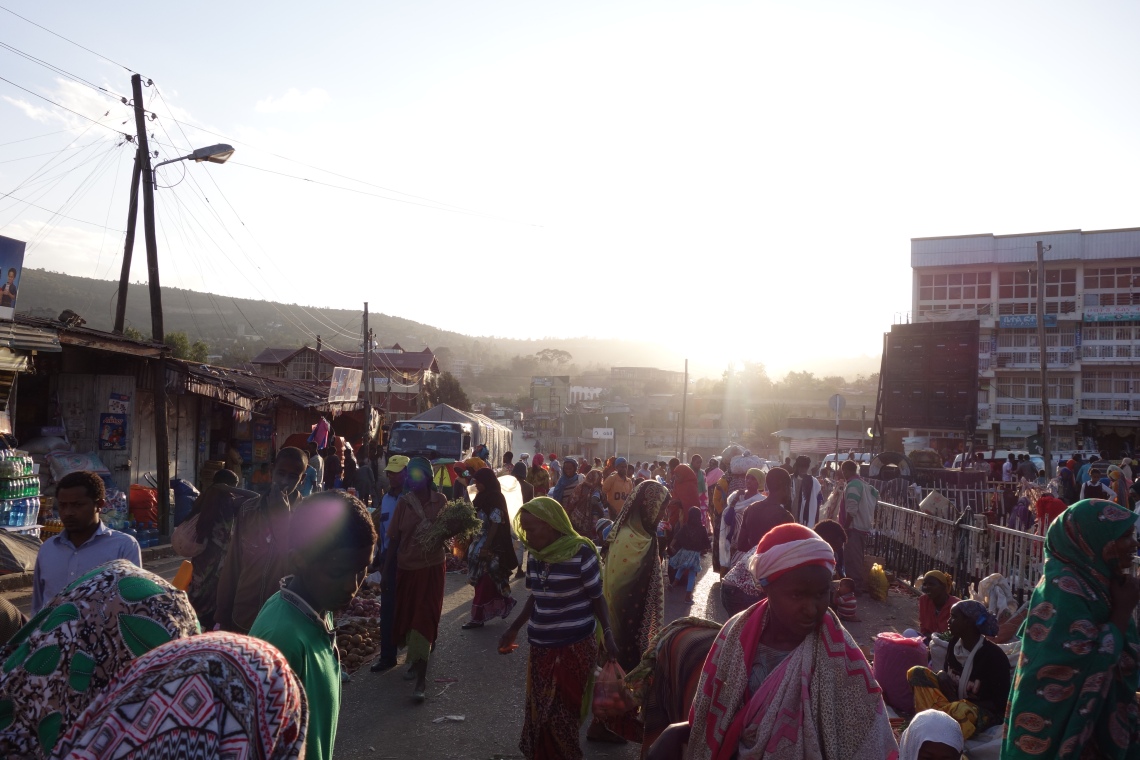

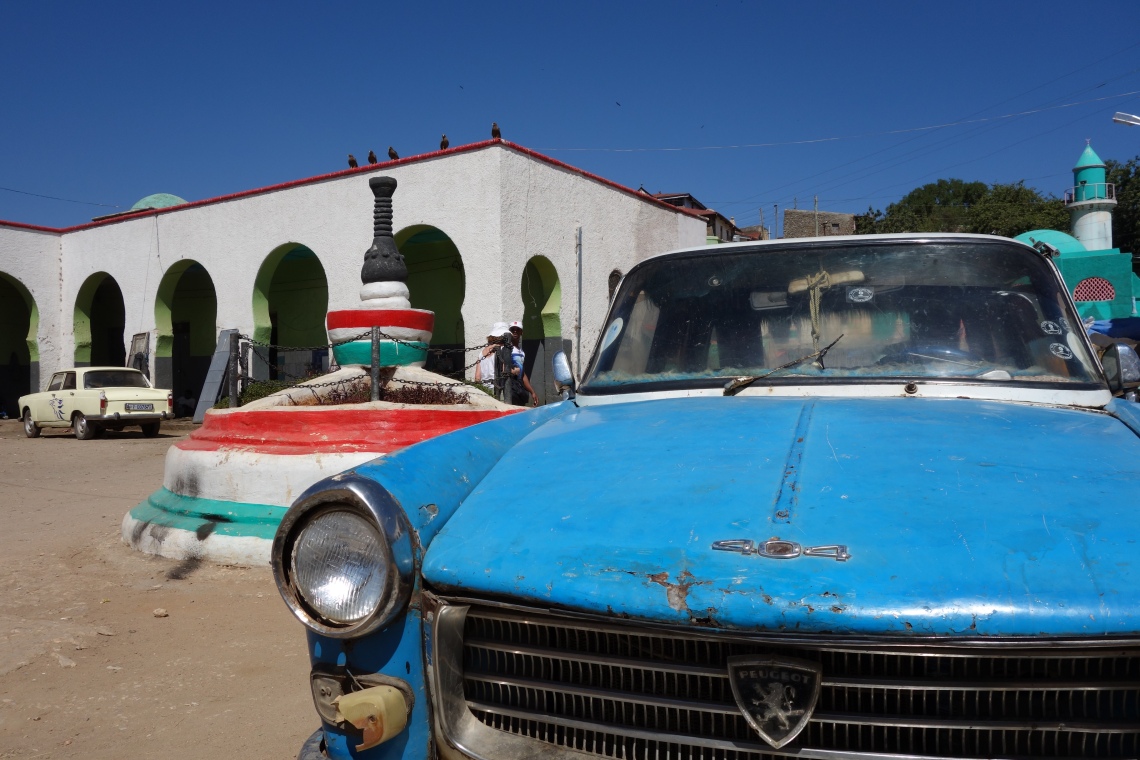


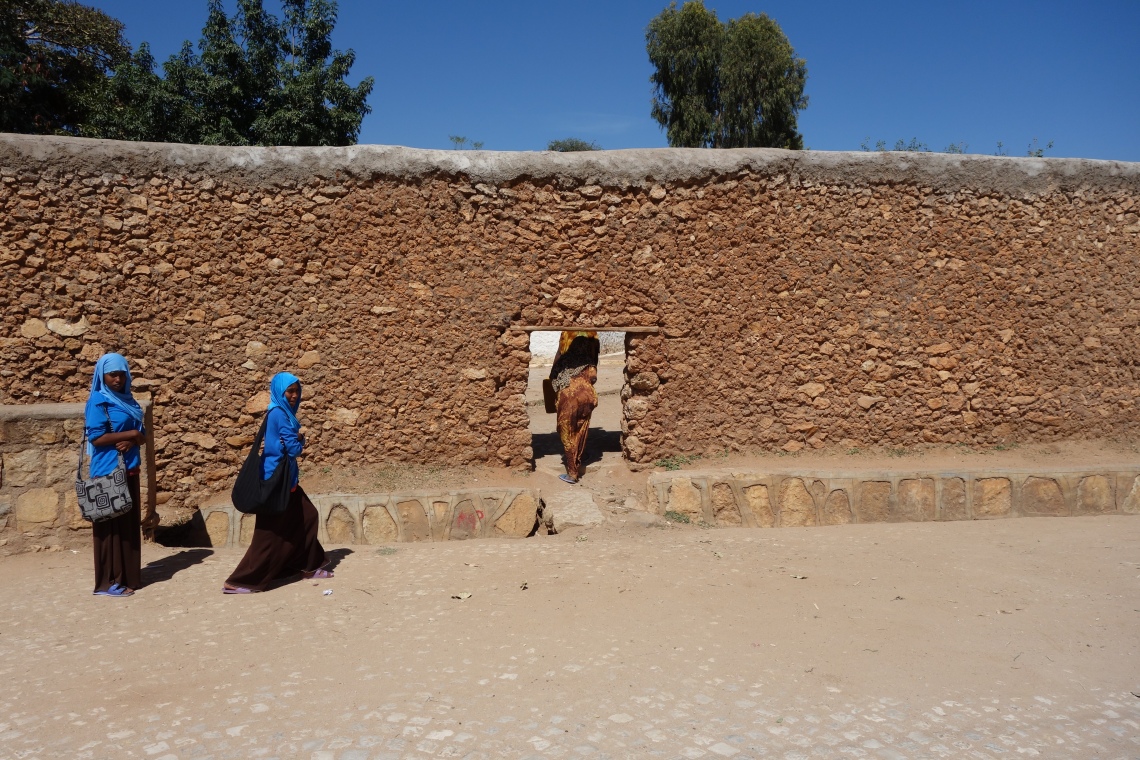
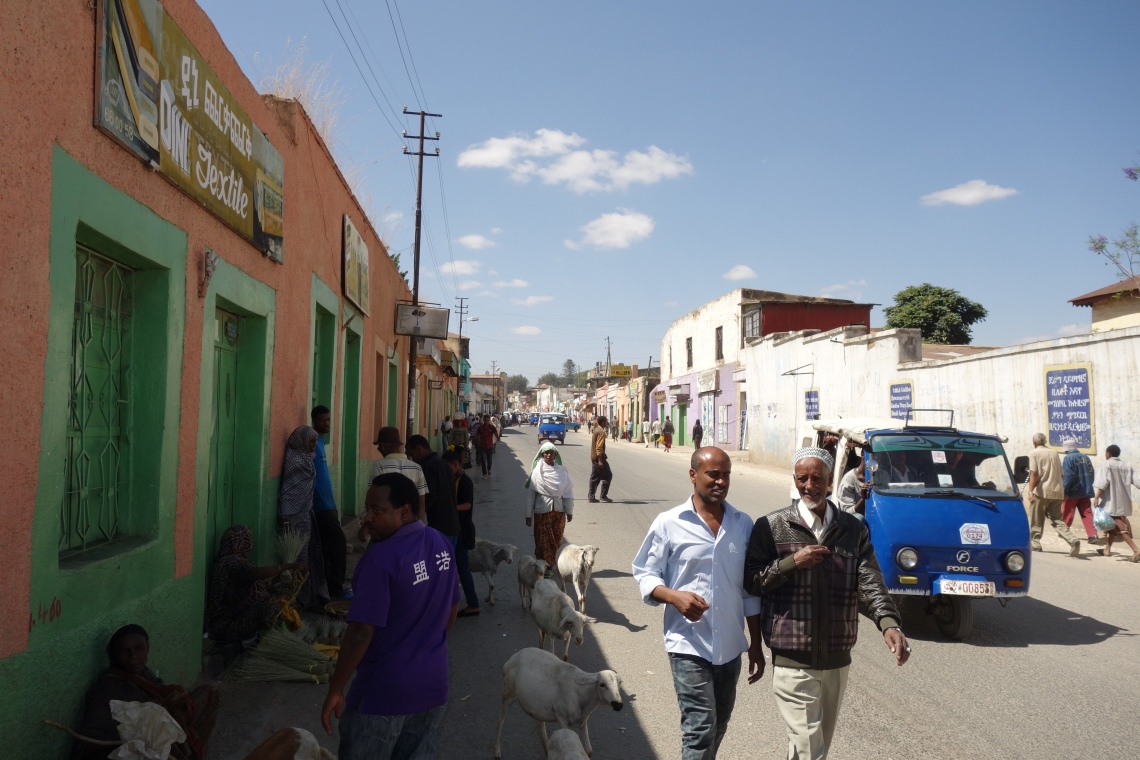

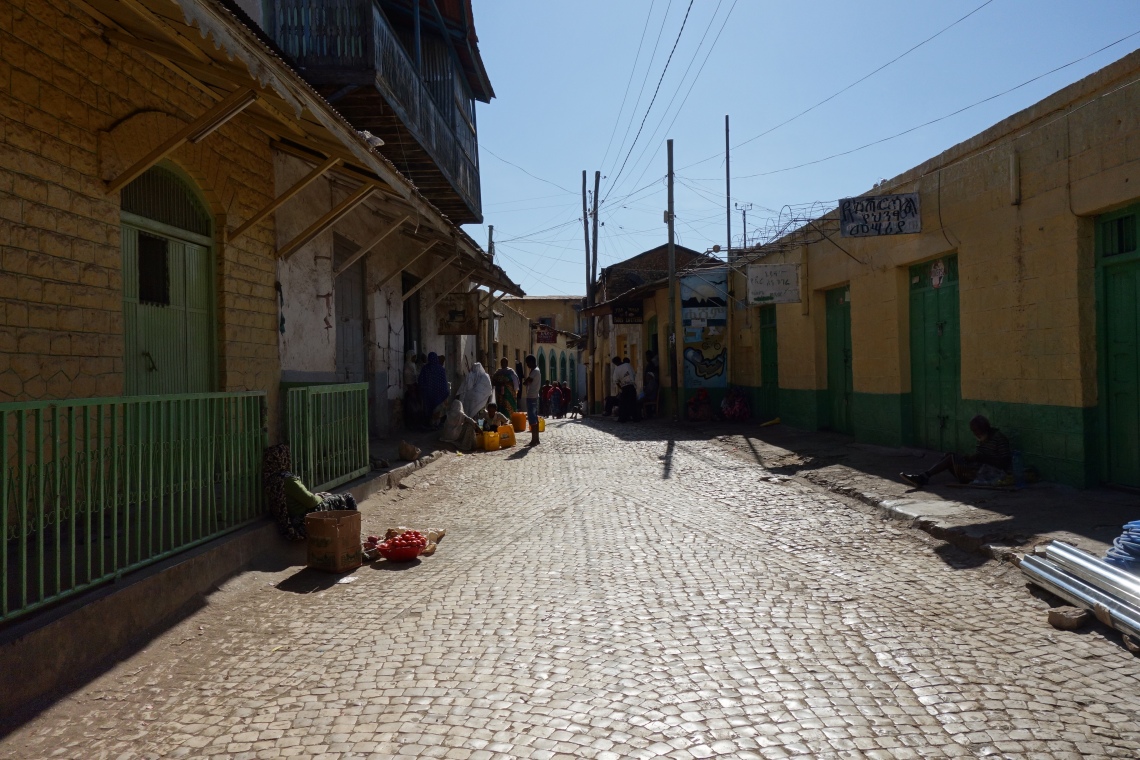
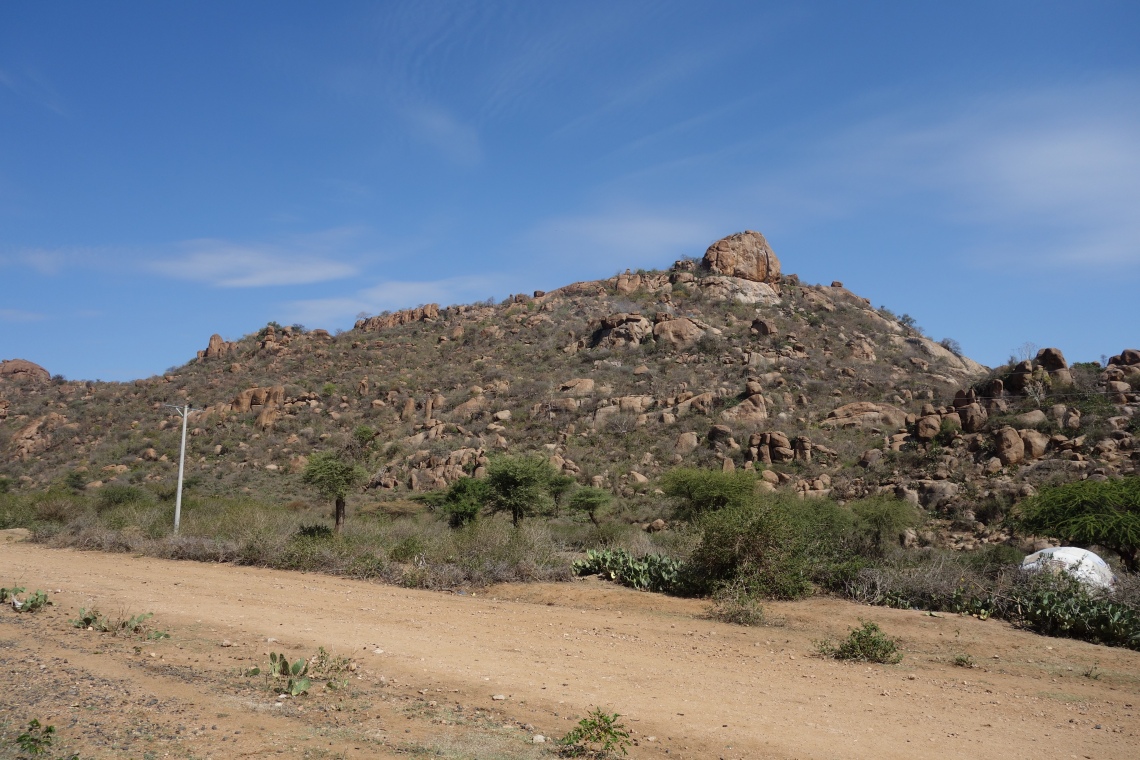
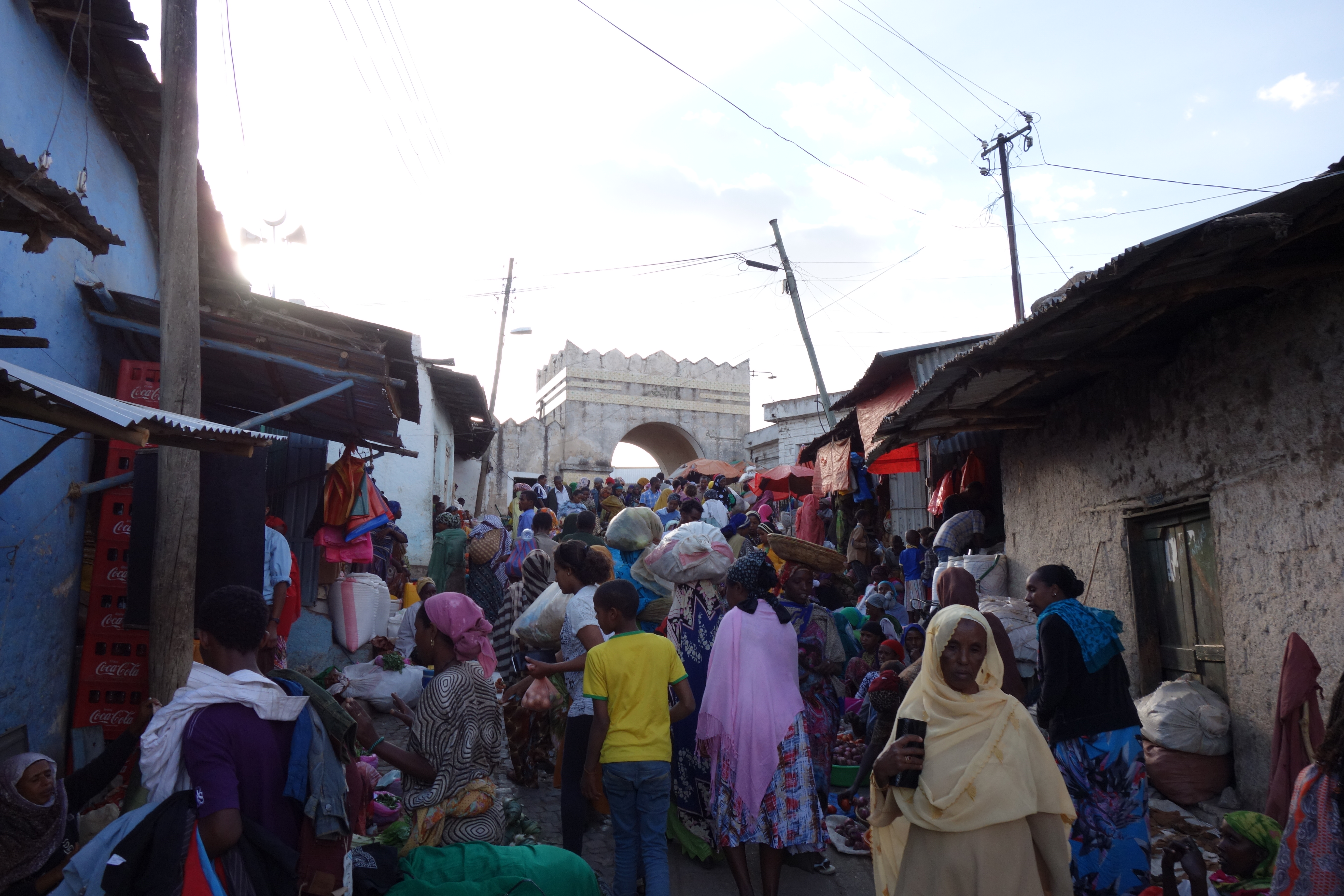





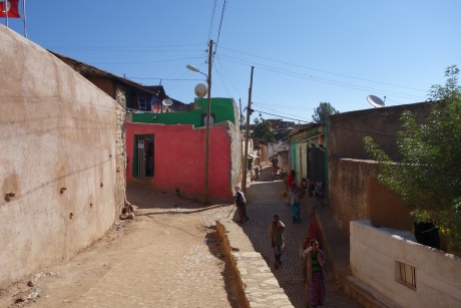








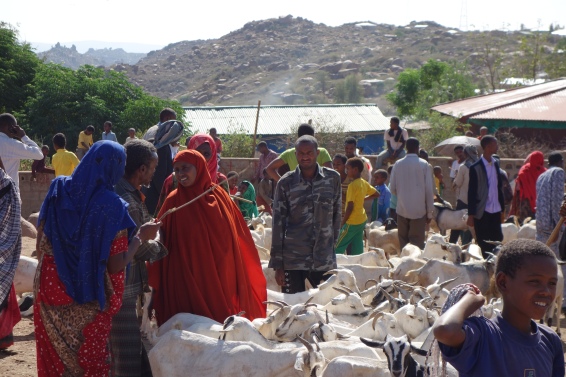









Thanks for your 2 superb reports, so far… as good as any reprts i have ever read..
If you have time could you also send them or the links to Philp Briggs author of Bradt Guide to E.so he could put them on their Bradt Ethiopia updates site..
(Addisadvisor from Tripadvisor Ethiopia)
LikeLike
Thanks for such generous feedback! But really, I owe all compliments to the destination itself – I just wrote about it😉 I’ll be sure to pass my posts on as per your advice.
LikeLike
Came from Reddit. Definitely one of the coolest blog posts I have seen in a while. I havent read it all, but will save it and finish it at work tomorrow. Just wanted to give you some kudos!
LikeLike
Thanks! Back at ya!
LikeLike
Absolutely great reports, I have been there many times and I can smell Ethiopia reading you. I enjoyed reading you.
LikeLike
Thanks! I’ll never forget the small of coffee beans roasting by the road either!
LikeLike
Wow, this is a very detailed and superb report. Thanks, really appreciate your time and effort.
LikeLike
Thanks for the kind words!
LikeLike